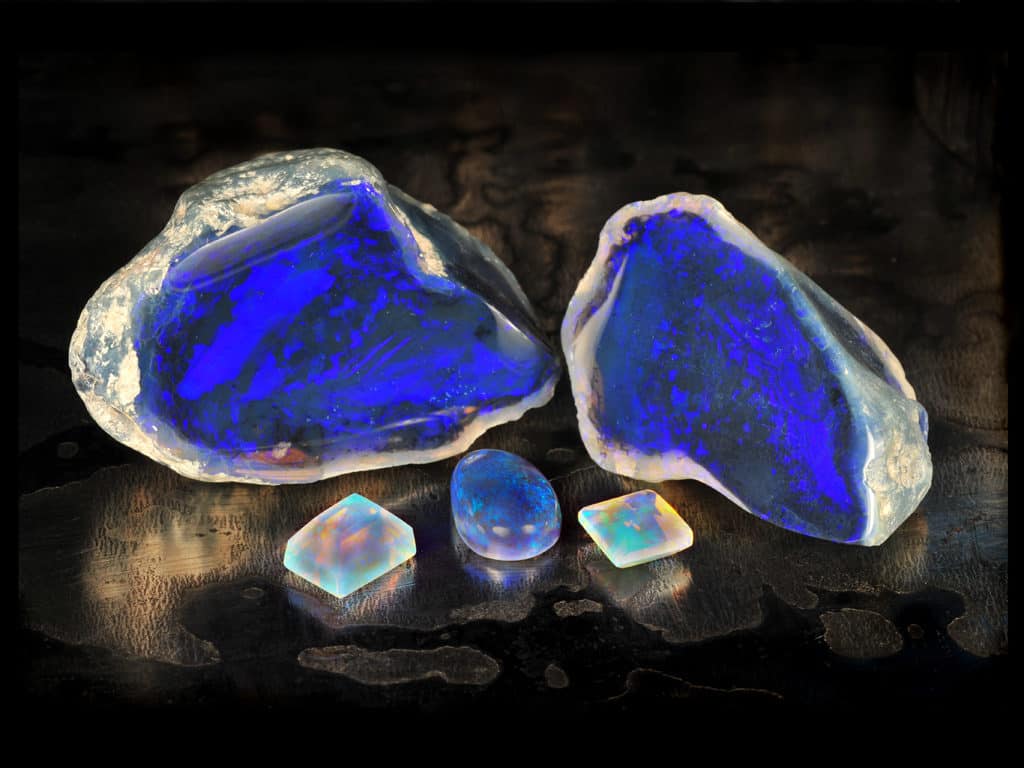GEMSTONES
OPAL

Opal comes in a wide variety of forms and colors. Crystal opal is found in a number of locations around the world including Australia but like the name implies it is translucent-to-transparent (without host rock) and nearly glass-like. Opal does not contain bright and vibrant colors in the opal itself. The structure of opal (micro spheres of silica) diffracts light as it passes thru the stone causing a prismatic effect that produces the colors we all see. This is why you see different colors in the same stone when you view it from different angles.
The opal necklaces I sell on my website are all crystal opal and they come from three distinct mines or mining regions in Australia. Lightning Ridge is one of the better known regions producing some of the best opal with a wide spectrum of colors. Lightning Ridge opal is also known for what is called “black opal” which means that the base material (the opal or silica of which it is comprised) will have a gray or dark cast to it. This is most apparent in low or subdued light. When you take black opal out into bright light the color and fire of the opal show through and you won’t see the grays or darker undertones of the base material. This is not a defect or a quality issue with the opal and black opal is some of the most desirable among collectors or opal enthusiasts.
Andamooka opal is most often the clearest or most glassy of the Australian opals. The colors it displays are most often blues, purples, cyan and sometimes greens. Cooper-Pedy opal is a white opal (meaning the background color of the material) and displays colors similar to Andamooka. Cooper-Pedy can have a silky white or milky appearance to the base material and most often is less glassy than Andamooka or Lightning Ridge.
Crystal opal from Ethiopia, sometimes called, Welo opal, is a relatively new find. It has been around long enough now to have proved its stability and can even be found in higher-end jewelry. This particular type of opal is classified as “hydrophane” opal as its internal structure allows it to absorb water. When it absorbs water it will sometimes look clear as glass and seem to lose its color. This is because opal itself does not contain the color you see when you hold it up to the light but it diffracts light in ways that reflect different wavelength or spectrum of light of a particular color. Water absorbed by the opal can interfere with its refractive properties and make it appear clear like glass. As the stone dries out, it can take on a whitish cloudy or milky look. Don’t worry, when the opal dries out fully the color and look of the opal returns to normal.
Do not attempt to accelerate drying of the stone by heating in an oven or use of a hot blow dryer. The opal will eventually dry on its own. The amount of time it takes depends on relative humidity levels where you live.
Care of your Opal: Opal can be cleaned, if necessary, with mild soap and water. No type of opal should ever be put into an ultrasonic cleaner as this may cause it to crack or break. Steam cleaning is not necessary and may damage your opal.
(see also Peruvian Blue Opal and Mexican Fire Opal)
